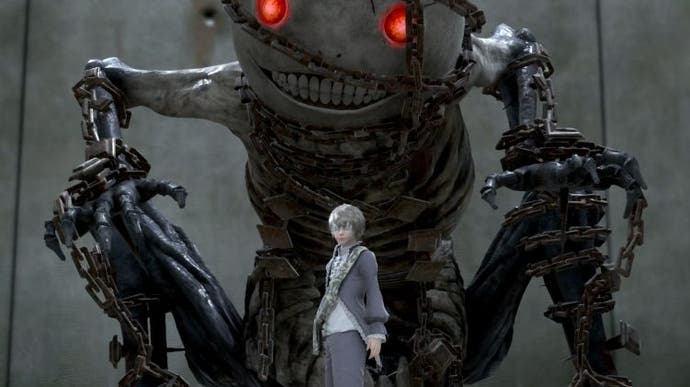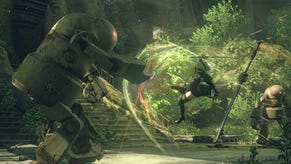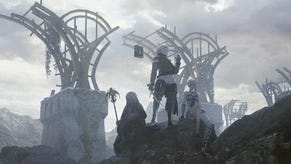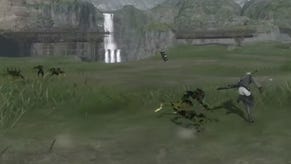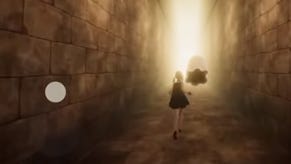NieR Replicant ver. 1.22474487139... review - a better version of the weakest game in the series
I just Replican't.
Because of the absolute state of game reiusses, I have to explain what Nier Replicant is before I can tell you how it is. Nier, developed by Cavia, released in 2010 in two versions - Nier Replicant for the Japanese market and Nier Gestalt for western territories. Both are almost identical, save for their protagonist. The west got "Dad Nier", an adult man with an Ikea wardrobe somewhere in his family tree, and Japan got a young man instead, out of the concern that the older lead wouldn't appeal to Japanese audiences.
Both protagonists have the same goal, saving Yonah, who is either their daughter or sister, from a mysterious illness called the Black Scrawl. Nier Replicant ver. 1.22474487139... brings the Japanese version to the west for the first time. The version number, the square root of 1.5, means to tell you that this is neither a remake nor just a remaster, it's somewhere in between.
Nier Replicant begins with a scene in which protagonist Nier tries to defend his sick sister Yonah from a large number of encroaching monsters called Shades, before an abrupt timeskip takes you over 1000 years into the future. The young man you control now shares his name with his counterpoint from the past, and he too has a sick sister he wants to save. Before you can find out how these two things are connected, you have to follow a rudimentary JRPG story for around ten hours.
Nier (or whatever name you decide to give him) spends his time being directed from A to B by a woman named Popola, who yes, big nudge, is one of the characters connecting this game to Automata. In an old temple, Nier meets a talking book called Grimoire Weiss, who gives him the power to defeat even Shades he was previously powerless against. He is then told that if he collects more abilities for the grimoire in the form of so-called Sealed Verses, and finds another book called Grimoire Noir, this will surely save his sister. Over the course of the story, he meets a young woman named Kainé, who swears like a sailor and fights in underwear that shows her entire butt (her only defining characteristics until much, much later), and Emil, who has to keep his eyes hidden because one look from him is enough to turn you to stone.
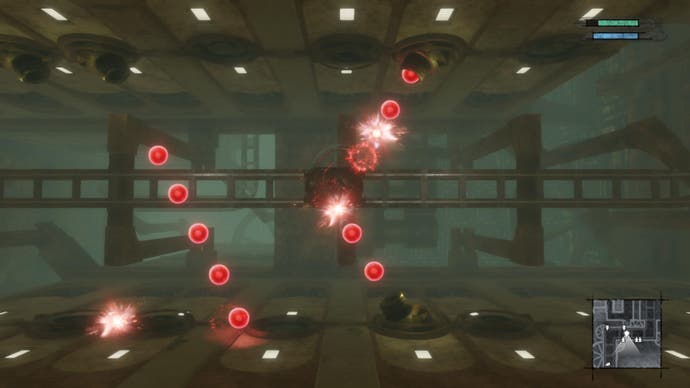
You visit six locations several times across a playtime of initially 15 hours, each of which you reach by trekking across an almost entirely empty piece of land. Yes, these locations are supposed to be empty because Nier takes place in a post-apocalyptic future, but that doesn't obscure the fact there are no interesting landmarks, each dungeon is aggressively linear, and there is next to no enemy variety. Nier is a very empty game.
Where the original was additionally saddled with ugly visuals that relied on grey and brown environments, the remaster elevates the whole package to an empty game with grey and brown environments, washed out textures and very good cut scenes, animations and lighting effects. Like Automata, Nier doesn't just stick to one genre in its gameplay, but gives you hack and slash combat, small platforming sequences, and some bullet hell gameplay. These elements are still unique to Nier and show a dedication to keeping things interesting and varied, but unfortunately the idea was in its infancy for Nier, so these sequences are all short, easy to get through and can get lost in tedious busywork. There is even a fourth gaming genre that makes an appearance in the Forest of Myth, though it's so unexpected I don't want to spoil you for it if you don't know it yet. Nier also plays with camera angles in truly interesting ways - some portions of the game will be isometric, a spooky manor makes use of the infamous Resident Evil camera, while for puzzles and bullet hell sequences you get to see things from a top-down angle.

The biggest change to Nier Replicant, apart from its looks, comes through the combat. In the original Nier this was an ostensibly simple affair that turned out fiddly to control. By getting controls in line with Automata's control scheme, battles are now a lot more enjoyable. New combo attacks and animations make the whole thing feel smooth, although combat is slower and never reaches the heights of Automata's stylish chain combos. Still I had fun, particularly in the second half of the game, where after another timeskip your hero grows up and becomes more proficient in combat, which gives you access to a new weapon set.
That second part of the game, which begins after another five-year timeskip, consists of backtracking through almost every location, places you've already seen multiple times during the first half. I'm not against backtracking if I am rewarded with looking at places a different way or I meet new characters, but Nier sends you back through the same halls to solve minimally different puzzles and fight the same bosses.
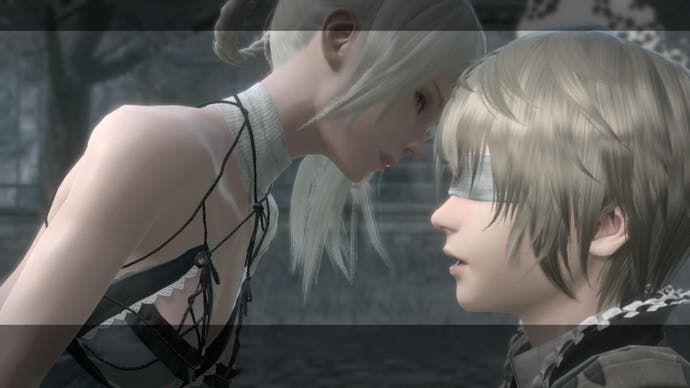
Nier Replicant struggles as a game released into a post-Automata world - it's more remaster than remake, so it fundamentally can't eradicate the aspects that went wrong in the original game. It's a game I've played for hours in a frantic search for the good bits. To be fair, everything that can could be improved without starting from scratch got an upgrade: the graphics are still not great but are certainly better, the character design is neat, the soundtrack - one of the best around - was re-recorded but otherwise functionally left alone, lines were re-recorded using the same voice actors for the (enjoyable) dub, and a Japanese language option was added. Two main quests let you skip famously annoying parts that people loved to complain about back in the day. New bits of lore have also made their way into the game, including a new boss and one (1) all-new sequence that connects Nier to its sequel as promised. But don't overestimate the amount of new stuff - I'm no Nier lore expert, but most of the game is as I remember it.
Nier's best parts are hidden behind its different endings, for which you'll have to play the second part of the game several times. But the endings aren't that different from each other, and due to the nature of the rest of the game, I wouldn't blame anyone who gets tired before that.

Yes, there's a narrative twist, but if you've played Automata, you expect there to be one, and waiting for it feels a bit like that Simpsons "say the line" meme. You'll likely feel different if you've never touched Automata, but I have, and that just makes me recommend Automata over Nier in every respect. Fundamentally, Nier was never a great game. It had promise, but it just wasn't there yet.
This isn't just my assertion, Nier: Automata was a clear effort to implement feedback from the first game and enhance Nier's strengths and eradicate its weaknesses, according to its developers. I consider Nier: Automata to be essential, as such I think if you're a mildly curious Automata fan, you'll come away from Nier disappointed. You have played the better Nier game already. This reiusse is meant for lore nerds, for hardcore fans, for completionists, oldschool Nier evangelists, basically everyone who's already decided to buy the game before reading this.
